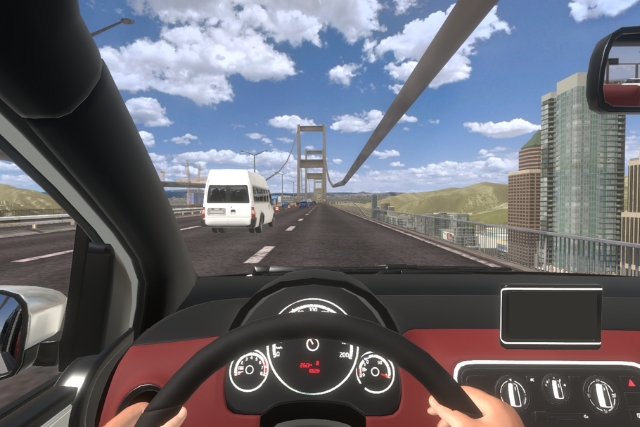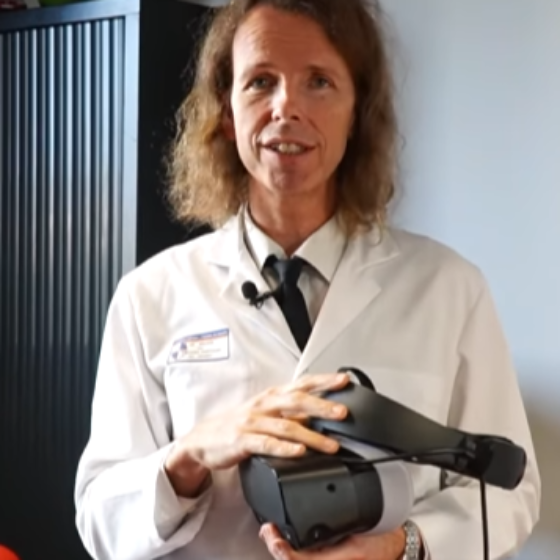Why such efficacy ?
1. Immersion
The user will be immersed in virtual environments designed to recreate anxiety-provoking high-altitude situations.
2. Cognitive restructuring
The user will unlearn negative reactions, such as catastrophic thoughts (“I’m going to fall”), and rebuild positive thought patterns (“I am safe”).
3. Repetition
Through repeated exposures, these patterns will become quickly and permanently ingrained in your mental functioning.
4. Progressiveness
The gradual increase in the difficulty of the environments will allow the user to progressively desensitize to the anxiety experienced and regain confidence in their abilities.
5. Personalization
With Artificial Intelligence, they will be supported and encouraged in a personalized way throughout the exposures.
Receive the C2Care method for free, combining Artificial Intelligence and Virtual Reality !
The AI revolution !
The different situations for fear of the void !
Buildings

Buildings
Buildings can be a significant source of anxiety for individuals with acrophobia due to various triggers : walkways, stairs, glass floors, glass elevators… Encountering others in a narrow passageway can also heighten the fear of falling into the void. All conditions can be adjusted to suit individual needs, enabling progressive and safe exposure therapy.
Cliff
Nature and hiking can be enjoyable, but for those with a fear of heights, such activities are daunting. The possibility of falling, the absence of safety railings, the perception of an unstable environment, or dangerous weather conditions can all trigger anxiety.
Each environment allows exposure to natural scenarios in a controlled and safe setting.
Cliff

Bridges

Bridges
Bridges are increasingly common, and it is easy to find oneself on one unexpectedly, leading to rising anxiety or even becoming frozen with fear while above a highway. The height, the risk of falling, the vehicles below, and the noise all amplify the stress.
Virtual reality helps overcome this fear by recreating realistic and progressive scenarios, allowing users to regain confidence in their ability to face such obstacles.
Lives changed thanks to our method.
Feel free to customize your exhibitions for a fully immersive experience !
Each environment can be personalized by precisely choosing the situation to be exposed to :
Height : Whether standing on the first floor of a building or the rooftop of a skyscraper, managing anxiety at your own pace is key to successfully addressing acrophobia. Heights can be progressively increased within the environments.
Walkway appearance : In building scenes, you can customize the walkway surface (glass, concrete, mesh), the railings, and the height of the walkway to suit your comfort level.
Speed : Environments involving driving scenarios allow you to adjust vehicle speed for exposure tailored to your pace.
Conversations : Thanks to artificial intelligence, you can interact with virtual characters in the environments, creating a deeper sense of immersion and participation during exposure sessions.
They testify to the effectiveness of C2Care !

Paola R - User
My fear of the void causes me many worries. Amusement parks, hiking, tree climbing activities are not feasible for me. Virtual reality situations are great exercises for me and I get better as immersions thanks to the accompaniment of my psychologist.

Jordan Fannis - Psychologist
I saw in the field what it brings to my patients, satisfaction, and then with a little bit of gamification, we enjoy going to work. It creates a kind of connection between my patients and me.

Franck M - User
I was always afraid of the void, and as I grew up it got worse. Without VR, I would never have crossed the line. Today, after a few months of therapy, I am back. I can do lots of new things that I would never have dared to do!

Madani - User
I made progress very quickly with virtual reality. I was acrophobia. I got over my fear. Also thanks to the psychologist’s advice. I was able to climb the tree climbing, the big wheel, climb a ladder of 6 m easily, ride on the bridge of Millau at 109 km hour without fear.

Dr Eric Malbos - Psychiatrist
In terms of effectiveness it is more effective than traditional CBT and can be done in the office or hospital. We also see, as studies like the one by García Palacios show, that there is a better motivation, patients are more motivated to do this therapy than traditional therapies.
Do you need further information or have any specific questions ?
He did it!

Paul B
Here is a picture of the Mazamet footbridge (140 m long and 70 m deep), one of the sites with plunging views where we went in May (the viewpoint of the cirque de Navacelle is not bad either, 300m of almost plunging space, the hamlet and the cars at the bottom are very small…). We can say that the treatment was effective because I wouldn’t have tried this type of exposure 6 months ago. The psychological warfare is not over, but the battles won bode well for a satisfactory outcome…
If I had a recommendation for future patients, regular daily exposure seems essential and 20-30 minutes is very bearable.











